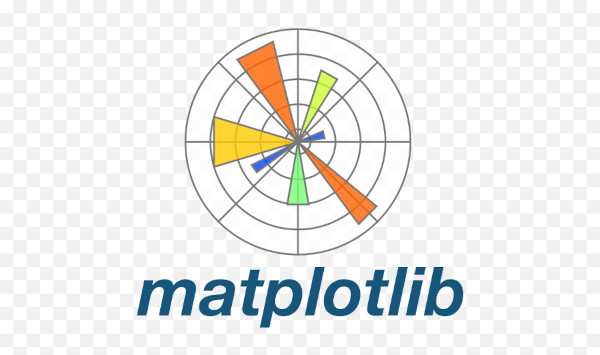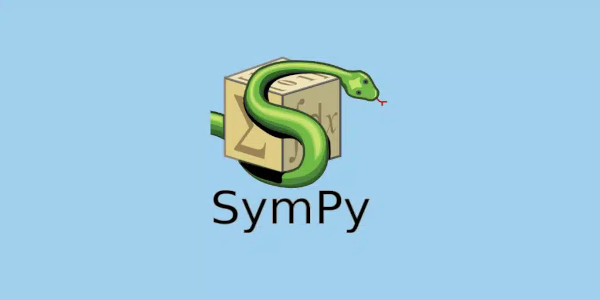Python's "batteries included" philosophy extends far beyond its core functionality. This is especially true when it comes to numerical computing. Developers seeking solutions for numerical problems are met with a wealth of powerful libraries within the Python ecosystem. In this blog post, we'll unveil some of the best options available, empowering you to tackle complex calculations and data analysis with ease.
NumPy: The Bedrock of Scientific Python

At the heart of Python's scientific computing capabilities lies NumPy (Numerical Python). It serves as the foundational building block for numerous scientific libraries and is widely regarded as the cornerstone of numerical computing in Python.
NumPy's core strength lies in its multidimensional array object, the ndarray. This powerful data structure offers significant advantages over standard Python lists when dealing with numerical data. Unlike lists, ndarrays hold elements of a single data type, enabling efficient operations and memory management.
But NumPy's power extends far beyond its core data structure. Here are some of its key features that make it indispensable for scientific computing:
- Broadcasting: This remarkable capability allows operations between arrays of different shapes under certain conditions. Imagine seamlessly adding a scalar value to every element in an array – that's the magic of broadcasting!
- C/C++ and Fortran Integration: NumPy seamlessly integrates with C/C++ and Fortran code, allowing you to leverage the performance benefits of these compiled languages for computationally intensive tasks.
- Linear Algebra: NumPy offers a comprehensive suite of linear algebra functions, making it a breeze to perform operations like matrix multiplication, inversion, and solving linear systems of equations.
- Fourier Transforms: Essential for signal processing and frequency analysis, NumPy provides efficient tools for computing Fourier transforms.
- Random Number Generation: Generating random numbers is crucial for simulations and statistical analysis. NumPy offers a robust set of functions for generating random numbers from various statistical distributions.
NumPy empowers you to handle complex numerical computations efficiently, perform sophisticated mathematical operations, and lay the groundwork for further analysis with other scientific Python libraries.
SciPy: A Treasure Trove of Scientific Algorithms

Building upon the solid foundation of NumPy, SciPy (Scientific Python) offers a treasure trove of algorithms and functions specifically designed for scientific computing. While NumPy excels at data manipulation and array operations, SciPy delves deeper, providing a comprehensive toolkit for tackling a wide range of scientific and engineering problems.
Here's a glimpse into the riches SciPy offers:
- Numerical Integration: SciPy provides robust tools for approximating definite integrals, which are essential for calculating quantities like areas, volumes, and moments under curves.
- Optimization: Finding minimum or maximum values of functions is a recurring task in many scientific endeavors. SciPy offers a variety of optimization algorithms to tackle problems with constraints, multi-variable functions, and non-linear relationships.
- Advanced Linear Algebra: While NumPy provides a solid foundation for linear algebra, SciPy extends these capabilities. It offers functions for solving complex eigenvalue problems, singular value decomposition (SVD), and sparse matrix operations, making it ideal for large-scale datasets.
- Signal Processing: Working with signals often involves filtering, convolution, and spectral analysis. SciPy's signal processing module provides a comprehensive set of tools for these tasks, allowing you to analyze and manipulate signals effectively.
- Statistics: From basic descriptive statistics to hypothesis testing and more advanced techniques, SciPy's statistical functions cater to a wide range of data analysis needs.
SciPy acts as a powerful companion to NumPy. It leverages NumPy's efficient array structures and expands upon them, providing a rich ecosystem of algorithms for solving complex scientific problems.
Pandas: Taming the Data Jungle

While NumPy excels at numerical computations and SciPy delves into scientific algorithms, Pandas swoops in to conquer the wild world of data analysis. This high-performance library provides user-friendly data structures specifically designed to wrangle and make sense of your data.
At the heart of Pandas lies the mighty DataFrame, a two-dimensional labeled data structure with columns that can hold different data types. Think of it as a supercharged spreadsheet on steroids! DataFrames allow you to organize and manage your data intuitively, making it a breeze to perform operations like:
- Data Cleaning: Missing values? Inconsistent formatting? Pandas offers a robust set of tools for handling these common data imperfections. You can effortlessly impute missing data, clean outliers, and standardize formats, ensuring your data is analysis-ready.
- Data Exploration and Selection: Pandas makes it easy to explore your data through intuitive methods for filtering, sorting, and grouping. Need to find rows that meet specific criteria? Want to calculate summary statistics for different groups? Pandas provides a streamlined workflow for these tasks.
- Data Transformation: Reshaping, merging, and pivoting data are essential steps in data analysis. Pandas offers powerful yet easy-to-use functions for manipulating your data into the desired format, empowering you to unlock valuable insights.
- Time Series Analysis: If you're working with time-indexed data, Pandas shines once again. It provides specialized functionalities for handling dates, calculating time differences, and resampling data at different frequencies, making it ideal for analyzing trends and patterns over time.
Beyond its core data structures, Pandas integrates seamlessly with NumPy and SciPy, allowing you to leverage their computational power for calculations on your DataFrames. This synergistic relationship makes Pandas a powerhouse for data analysis, simplifying complex tasks and enabling you to focus on extracting meaningful insights from your data.
Matplotlib: Illuminating Your Data with Visual Insights

While the libraries we've covered thus far empower you to manipulate and analyze data, Matplotlib steps in to bring your data to life through visualization. This comprehensive library provides a powerful toolkit for creating various types of plots and charts, transforming raw numbers into clear and informative visuals.
Matplotlib boasts a wide range of plot types, from the classic line chart to sophisticated heatmaps and 3D visualizations. Its tight integration with NumPy and Pandas allows for seamless data visualization workflows. Simply pass your NumPy arrays or Pandas DataFrames to Matplotlib's plotting functions, and watch your data transform into compelling visuals.
Here's a glimpse into Matplotlib's capabilities:
- Customization Galore: Matplotlib offers a high degree of customization, allowing you to control every aspect of your plots. From line styles and colors to axis labels and annotations, you can tailor your visualizations to match your specific needs and enhance clarity.
- Publication-Quality Output: Matplotlib generates high-quality plots that are suitable for presentations, reports, or even publication. You can export your visualizations in various formats like PNG, JPG, PDF, and SVG, ensuring they integrate seamlessly into your documents.
- Animation Magic: Matplotlib isn't limited to static plots. It allows you to create animations, bringing your data to life in a dynamic way. This can be particularly useful for visualizing trends over time or exploring relationships between variables.
- Interactive Exploration: For a truly immersive experience, Matplotlib can be used to create interactive visualizations. By integrating with GUI toolkits like Tkinter or PyQt, you can develop interactive plots that allow users to zoom, pan, and explore the data in real-time.
Matplotlib serves as a cornerstone for data visualization in Python. Its versatility, customization options, and tight integration with the scientific Python ecosystem make it an invaluable tool for transforming data into impactful visuals that illuminate patterns, trends, and relationships within your data.
SymPy: Unveiling the Magic of Symbolic Mathematics

While the libraries we've explored excel in numerical computations and data analysis, SymPy ventures into the realm of symbolic mathematics. This powerful library allows you to work with mathematical expressions not just as numbers, but as symbolic objects. Imagine manipulating variables, performing algebraic operations, and solving equations with letters instead of fixed values – that's the beauty of SymPy.
SymPy offers a rich set of features that empower you to:
- Symbolic Expression Manipulation: Define variables, create complex expressions with functions, and perform various algebraic operations like differentiation, integration, simplification, and expansion. SymPy handles these operations symbolically, allowing you to explore mathematical relationships without worrying about specific numerical values.
- Equation Solving: Stuck on a tough equation? SymPy can help! It provides robust functionalities for solving linear and non-linear equations, systems of equations, and even differential equations. By working symbolically, SymPy can reveal the underlying mathematical relationships and provide solutions in terms of variables.
- Calculus Made Easy: SymPy streamlines symbolic calculus tasks. Take derivatives and integrals of complex expressions, and explore concepts like limits and continuity in a symbolic framework. This can be particularly useful for understanding the theoretical underpinnings of mathematical models or deriving analytical solutions.
- Advanced Mathematical Functions: SymPy boasts an extensive library of mathematical functions, including trigonometric functions, special functions (like gamma and beta functions), and matrix operations. This allows you to explore a wide range of mathematical concepts and manipulations symbolically.
Beyond its core functionalities, SymPy integrates well with other scientific Python libraries. You can seamlessly convert between symbolic expressions in SymPy and numerical arrays in NumPy, enabling you to bridge the gap between symbolic manipulation and numerical computation.
SymPy caters to various use cases, including:
- Deriving Analytical Solutions: Instead of relying solely on numerical approximations, SymPy allows you to derive exact analytical solutions to mathematical problems, providing deeper insights into the underlying relationships.
- Simplifying Complex Expressions: SymPy can simplify intricate mathematical expressions, making them easier to understand and manipulate. This can be invaluable for theoretical analysis or preparing expressions for numerical evaluation.
- Educational Tool: SymPy serves as a valuable educational tool for students and researchers alike. By working with symbolic expressions, users can gain a deeper understanding of mathematical concepts and explore them in a more interactive way.
SymPy unlocks a new dimension of mathematical exploration in Python. It empowers you to delve into the symbolic world of mathematics, solve problems with variables, and gain a deeper understanding of the relationships between mathematical concepts.
Expanding the Python Playground: A Look at Specialized Libraries
While the core libraries we've covered provide a solid foundation for numerical computing, data analysis, and scientific exploration, Python offers a vast ecosystem of specialized libraries that cater to even more specific needs. Here's a glimpse into some additional libraries that might prove valuable in your Pythonic endeavors:
Scikit-learn: The Machine Learning Workhorse: For those venturing into the realm of machine learning, Scikit-learn reigns supreme. This comprehensive library provides a user-friendly interface to a broad spectrum of machine learning algorithms. From classification tasks like spam filtering or image recognition to regression problems like predicting stock prices or sales figures, Scikit-learn offers a robust toolkit to empower you to build intelligent systems. It also includes functionalities for data preprocessing, model evaluation, and hyperparameter tuning, streamlining the machine learning workflow.
TensorFlow: The King of Deep Learning: Deep learning, a subfield of machine learning, has revolutionized numerous fields. TensorFlow, an open-source library developed by Google, stands as a powerful tool for building and training deep learning models. Its data flow graph architecture allows you to design complex neural networks and leverage various hardware platforms, including GPUs, for efficient computations. If you're looking to tackle tasks like image or speech recognition, natural language processing, or recommender systems, TensorFlow offers the computational muscle to bring your deep learning ideas to life.
PyTorch: The Dynamic Deep Learning Alternative: PyTorch, another open-source deep learning library, offers a dynamic computational graph approach. This allows for greater flexibility in model creation and debugging compared to TensorFlow's static graph. PyTorch is known for its ease of use and intuitive API, making it a popular choice for beginners and researchers alike. Similar to TensorFlow, PyTorch excels in various deep learning applications like computer vision, natural language processing, and reinforcement learning.
The choice between Scikit-learn, TensorFlow, and PyTorch depends on your specific needs and preferences. Scikit-learn is ideal for traditional machine learning tasks, while TensorFlow and PyTorch cater more towards deep learning applications. However, all three libraries contribute significantly to Python's machine learning prowess, offering powerful tools to unlock the potential of data and build intelligent systems.
Choosing the Right Tool for the Job: Tailoring Libraries to Your Needs
With a treasure trove of scientific Python libraries at your disposal, selecting the most suitable tool for your project can feel overwhelming. Here's a breakdown to guide you towards the libraries that best align with your specific goals:
Numerical Computation Powerhouse: When high-performance numerical computations are your priority, look no further than the dynamic duo of NumPy and SciPy. NumPy's efficient multidimensional arrays and SciPy's extensive collection of algorithms provide the muscle for tackling complex calculations, linear algebra operations, and numerical integration with ease.
Data Analysis Champion: For wrangling and making sense of your data, Pandas emerges as the champion. Its intuitive DataFrames and Series structures streamline data cleaning, exploration, transformation, and time series analysis. Pandas seamlessly integrates with NumPy and SciPy, allowing you to leverage their computational power for calculations on your data.
Visualization Wizardry: Transforming raw data into clear and informative visuals is where Matplotlib and Seaborn shine. Matplotlib offers a comprehensive toolkit for creating various plots and charts, with extensive customization options for tailoring visualizations to your needs. Seaborn, built on top of Matplotlib, provides a high-level interface with a focus on statistical graphics, making it ideal for creating aesthetically pleasing and informative visualizations that reveal patterns and trends within your data.
Symbolic Mathematics Maestro: If your pursuits delve into the realm of symbolic mathematics, SymPy stands out as the maestro. This library empowers you to manipulate mathematical expressions symbolically, perform operations like differentiation and integration, and solve equations with variables – a powerful tool for exploring theoretical underpinnings or deriving analytical solutions.
Remember, the beauty of Python's scientific ecosystem lies in its synergy. These libraries often work together seamlessly. You can leverage NumPy arrays within Pandas DataFrames, perform calculations on those DataFrames with SciPy functions, and then visualize the results using Matplotlib or Seaborn.
As you embark on your scientific Python journey, experiment with these libraries and discover which ones best suit your specific needs. With the right tools in your Pythonic toolbox, you'll be well-equipped to tackle complex problems, uncover hidden insights within your data, and bring your scientific ideas to life.